Assistive Technology
Introduction
Sometimes called assistive devices, independent living aids, and adaptive equipment, assistive technology (AT) can help your loved one live more independently. Assistive technology may also make your job as a caregiver easier and more enjoyable.
If you’re caring for someone with dementia, you may be worried about his falling, wandering, or getting lost. Certain types of AT can help. A loved one with a physical or cognitive (thinking) impairment can use AT to make activities of daily living, such as dressing, bathing, grooming, eating, and toileting, a little easier.
This fact sheet describes different types of AT that may be helpful to you and your loved one. In addition, it addresses how to find AT, how to pay for devices, and how to decide what devices or home modifications you might need.
Definition
Assistive technology devices are basically helpful products that improve or maintain a person’s ability to live and function independently. Some Assistive technology can be as simple as a hearing aid or cane, or as sophisticated as a voice-activated computer system or mechanical hoist to lift and turn someone in bed. AT is considered “low tech”—canes, magnifiers, and pill organizers—while “high-tech” assistive devices include computer applications and programs, sensors, and smart phone and tablet applications or systems.
AT is a rapidly growing area and is used by people with disabilities and older adults who want to stay in their communities and remain independent as long as possible. In 2003, an AARP survey suggested that close to 15 million Americans with disabilities used some type of AT. Current projections suggest that over 50 million, or close to 20% of Americans use some time of assistive device. In a 2018 update, the World Health Organization states that globally, more than 1 billion people need 1 or more assistive products. Even with the advance in technology, according to AARP the top three most popular AT devices remain:
- Walker, cane, or crutches
- Aids for bathing or toileting
- Wheelchair or scooter
While some people associate AT with people who have disabilities, older adults can also benefit from all different kinds of AT. An updated 2019 article from AARP notes that by 2030 close to 132 million Americans age 50 and older will spend close to $84 billion a year on technology products. Also 80% of Americans age 50-64 now own smart phones. With rapidly advancing technology, all ages of people now have technology as a part of their daily life.
What Kind of AT Is Right for Your Loved One?
The area of assistive technology has grown tremendously in recent years, and many manufacturers now provide a wide range of products and devices. It can be confusing to determine which products might be right for your loved one. Here are a few basic tips to help you in this task:
- Focus on the actual tasks your loved one wants or needs to do when choosing devices. While this might seem obvious, it’s easy to get drawn into buying a product that looks good but doesn’t really address your loved one’s needs.
- Generally, it is best to pick the simplest product available to meet the need. Simpler devices are often easier to use, less expensive, and easier to repair and maintain than more complex devices are.
- For example, if someone does not have difficulty remembering to take their medications but gets confused about which pills to take at which times, a weekly pill organizer that can be filled by a caregiver or a pre-filled subscription service would solve the problem. Purchasing an automated pill dispenser with alarms to remind the person to take medications would be more complicated than necessary and would certainly be more expensive than the simpler pill organizer.
- Ask other people with disabilities what products they have found to be helpful.
- Ask experts who provide care to your loved one, like rehabilitation specialists, occupational therapists, and physical therapists about which type of technology might be best.
- Ask to use the device on a trial basis to see if it is truly going to meet your loved one’s needs.
- Ultimately, your loved one’s opinion about a certain piece of AT is the most important. The device needs to be comfortable, attractive, and simple to use.
- For example, if someone does not have difficulty remembering to take their medications but gets confused about which pills to take at which times, a weekly pill organizer that can be filled by a caregiver or a pre-filled subscription service would solve the problem. Purchasing an automated pill dispenser with alarms to remind the person to take medications would be more complicated than necessary and would certainly be more expensive than the simpler pill organizer.
The following website provides comparisons of assistive devices and is a good resource for consumers trying to decide which equipment and devices to purchase:
Technology for Long-Term Care
www.techforltc.org
Where Can You Buy AT?
With so many vendors and manufacturers producing AT, it can be confusing to decide which products to buy. A few public agencies keep a complete list of AT products, and manufacturers and can help you find the right products for your loved one. Because these agencies do not sell equipment, they are a more trustworthy source of information than is contacting manufacturers directly.
Every state and territory has a State Technology Assistance Project that has information about AT, financial assistance to buy equipment, and AT loan programs.
Rehabilitation Engineering and Assistive Technology Society of North America
(RESNA)
www.resna.org
If you are having difficulty finding where to buy AT, your local centers for independent living (CILs) may be a good place to start. You can find out where centers are in your state from the link below:
Centers for Independent Living (CIL)
http://www.virtualcil.net/cils/
Local rehabilitation centers, hospitals, skilled nursing facilities, and universities connected to therapy programs also have occupational, physical, and speech therapists who can help with where you can buy equipment.
Paying for Aids and Equipment
Some government programs and other funding sources will help pay for some medical equipment, also called “durable medical equipment” (DME) such as canes, walkers, wheelchairs, and scooters, if prescribed by a physician or otherwise determined to be medically necessary. However, other independent living aids, like grab bars, bath mats, and dressing aids, are typically not covered. The following funding sources and agencies may help you purchase certain kinds of aids:
- Medicare
- Medicaid, particularly waiver programs
- Private health insurance plans
- Public service organizations like United Way and Easter Seals
- National Family Caregiver Support Program
- Department of Veterans Affairs
- Local Centers for Independent Living
To find out which medical equipment and aids are covered by these programs, see the Resources section at the end of this fact sheet for contact information.
Types of AT
In this section, the most popular categories of AT are outlined. To find out more information on these products or others not listed, refer to the agencies listed in the Resources section at the end of this fact sheet.
Independent Living Aids
A wide variety of products and appliances help people perform “activities of daily living”–i.e., eating, food preparation, bathing, and dressing. Many of these items are available from drug stores and large retail stores:
- Kitchen items include easy-to-grip silverware, high-lipped dishes and plate guards, specialized cutting boards and utensils, self-opening scissors, reaching tools, jar openers, smart-phone applications for turning kitchen devices on and off.
- Bedroom items include bed bars, bedside organizers, reaching tools, various orthopedic support cushions, hip pads for fall protection, bedside commode, transfer board, night lights, applications that assist with turning lights on and off, and large-numeral alarm clocks.
- Bathroom items include full-length tub mats, bathtub and shower seats, transfer benches, toilet riser or raised commode, night lights, long-handled scrub brushes, shampoo basins, lotion applicators, colored tape, markers, handheld showerheads, and smart phone applications for hot water controls.
Personal Care Products
A variety of personal care products are designed to help people with physical or cognitive limitations dress, disrobe, groom, and maintain good hygiene.
Dressing and grooming aids include dressing sticks, elastic or non-tie shoelaces, buttonhooks, zipper pulls, velcro, easy-to-pull sock, panty hose, and ted-hose aids, long-handled combs and brushes, pumps for soap or toothpaste, and various reaching tools.
No-rinse or dry shampoo, body bath and body wash that does not require rinsing off with water, which can be helpful if your loved one has difficulty getting in and out of a bathtub.
Adaptive clothing is designed for people who have difficulty dressing because of cognitive and/or physical disability, or who need frequent changing due to incontinence. The clothing is made to be both fashionable and convenient. Many chain stores now carry clothing brands that are built for ease of use and comfort.
Medication Aids
People with chronic illnesses often take several prescription or nonprescription medications daily for which the following devices can help:
Daily or weekly pill organizers can help ensure that correct dosages of medications are taken each day.
Timers and specialized mini-alarms can remind your loved one when the next dose is due.
Pill crushers and splitters help when swallowing is difficult. Medication aids are available in many drug stores and hospital pharmacies.
Several pharmacies and online websites now offer pills being pre-separated and delivered in packs that include the time and date for when to take the medication. Sites like amazon.com have recently started programs like this.
Incontinence and Toileting Supplies/Aids
Adult protective undergarments can help individuals who have problems with bladder or bowel control. Fortunately, these are now widely available at drug stores under brand names like Depends, Attends, and Dignity.
Mattress and floor protectors such as a plastic fitted sheet or mattress pad to repel or absorb urine before it damages the mattress, and floor runners that protect flooring.
Antiseptic skin lotions and wipes, catheters, portable receptacles and a host of related products for incontinence can make the affected person more comfortable and minimize difficulties for the caregiver.
To order the National Association for Continence resource guide of products and services for incontinence, see www.nafc.org.
Commodes, toilet seat modifiers, and urinals come in a variety of designs to help someone with incontinence or someone who has difficulty getting to the bathroom. Items include raised and adjustable seats, safety rails, grab bars, and portable commodes.
AT for Improving Mobility
If your loved one needs assistance walking, the following AT, which is available at most medical supply stores, some pharmacies, and now big box stores like Target and Walmart, may help:
Gait belts help facilitate transfers and can help a caregiver balance a person’s center of gravity. When moving a person from one position to another the belt can help the caregiver more safely lift or shift directions of the person being transferred.

*Image from: https://www.allegromedical.com/products/products-washable-cotton-gait-belts
Canes are certainly simple but effective walking aids. Designs include folding canes, adjustable canes, double-grip canes and single, three- and four-pronged canes.
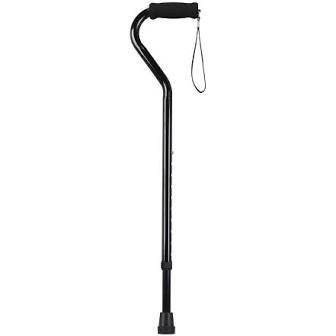
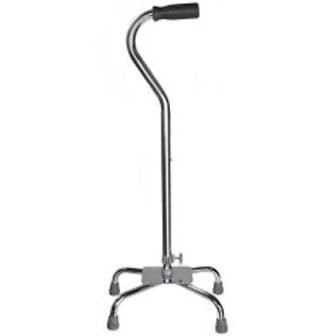
*Image from https://tinyurl.com/yygclrv4 and www.walgreens.com
Walkers provide more stability and should be tested to make sure they are sturdy, lightweight, at a sufficient height for the individual, and can be moved or rolled easily. Foldable walkers and those that double as a seat are also convenient. Many people like to attach a basket or pouch on the front to store things. Walkers come in several different models. You can consult with a physical therapist or occupational therapist for getting a walker that is appropriate to your loved one’s needs.
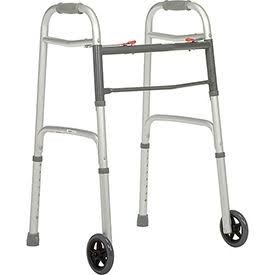
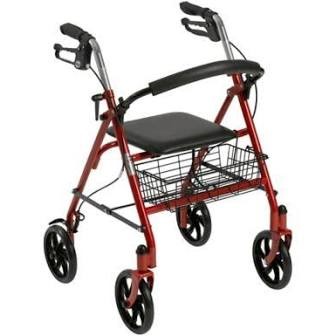
*Images from https://tinyurl.com/y4rxab8k
If your loved one can no longer walk safely, he or she will most likely need a wheelchair or a scooter:
Wheelchairs come in many different varieties (both manual and electric). You may want to consider getting removable footrests and/or a collapsible wheelchair for loading into a car for added convenience. Other wheelchair accessories such as rim covers, gloves, seat covers, cushions, security pouches, and carry packs can also be handy.
- Manual wheelchairs require the person to use some arm strength or leg strength and skill to move the chair —unless there is someone to push. A lowered wheelchair, called a “hemi-height” wheelchair allows a person’s heels to touch the floor and is recommended when a person uses their feet to move the chair.

*Image from https:// www.tenspros.com/roscoe-kona-wheelchair.html
- Electric or “power” wheelchairs are useful for individuals who can move around on their own but lack the strength to wheel themselves. Electric wheelchairs require the ability to make decisions and maneuver the chair. They are often not recommended for someone with impaired judgment.
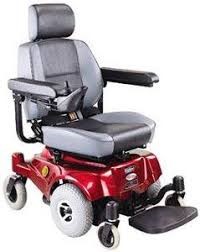
*Image from https://www.amazon.com/Compact-Mid-Wheel-Drive-Power-Burgundy/dp/B001BFQ0IO
- Three-wheeled scooters are a great option for individuals who are able to get in and out of a chair. Scooters are popular among individuals with multiple sclerosis or those who can walk very short distances, have good trunk strength and control, and get around by themselves.
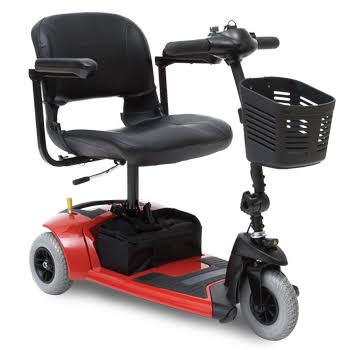
FCA does not recommend ordering wheelchairs or scooters by mail or online. Having a professional such as an occupational therapist or physical therapist have input on the best fit for a wheelchair or scooter is best. Purchasing a chair or scooter through a local dealer or supplier will ensure that you have a convenient place to take your product if it needs to be replaced or repaired. Talk with your local Center for Independent Living to find out which dealers have a good reputation in your community.
Communication AT
Advances in computer, telephone, and smart device technology have greatly helped people who have physical disabilities and elders who need supports to live independently while maintaining connections to family, friends, and support services.
Modified traditional telephones may use large buttons, headsets, speakerphone capabilities, or keyboard and visual displays to make telephones useable by people who have disabilities.
Computer technology can allow people to stay in contact via email or messaging while more sophisticated technology can employ modified keyboards or voice recognition software to enable individuals who have disabilities to use computers effectively.
Smart phones and tablets now also offer many options with voice-to-text features, voice operated commands, different texting functions, and several applications for communication for many different people to remain or become independent.
Accessible telephones, videophones, captioning, real-time transcription, telecommunication with TTYs and TDDs, and visual alert systems can offer ways for people who are Deaf or Hard of Hearing to effectively communicate. Hearing aids, cochlear implants, Frequency Modulation (FM) systems, coupling accessories, and loop systems are some other types technology for people who are Deaf or Hard of Hearing. State and local programs also offer assistance and funding for telecommunication access programs.
For more information about AT for people who are Deaf or Hard of Hearing:
National Association of the Deaf
www.nad.org
For people with communication difficulties due to stroke, ALS, aphasia, quadriplegia, multiple sclerosis or other disorders, assistive technology can be very helpful in allowing them to communicate with others. Rapid advances in technology have resulted in products that dramatically increase the independence of people with very limited mobility, allowing them to “speak,” operate lights and other controls, and remain active members of their families and communities.
Communication boards can be simple low-tech plastic boards with graphics and a keyboard-style letter display to convey messages. Automated boards with voice input or a computer screen are also available.
Voice- or eye-activated communication systems allow people with complex physical difficulties to operate a computer or a telephone to communicate with others.
Speech amplification and adaptation systems are automated speech processing systems that can correct garbled speech for improved communication.
Reading and Vision Aids
Recent development with smart technology has greatly helped older adults and people who have vision and reading needs to live independently.
Special laptops, tablets, braille keyboards, and braille displays are some ways for people with vision disabilities to work as well as communicate with others.
Newer technology such as Aira through Google puts people in contact with agents through a call center and those agents watch live video stream and guide people through cities and daily activities.
For more information about support for vision differences visit:
American Foundation for the Blind
www.afb.org
Home Modifications
Making a house safe and comfortable can allow an individual to remain at home as their abilities change. A 2018 AARP survey notes that 76% of Americans age 50 and older would like to “age in place” or remain in their current residence and community as long as possible. You may be able to make some simple modifications to your loved one’s home with relatively little cost or assistance. For larger modifications, such as widening doorways, lowering counters, remodeling hallways, and installing lifts or elevators, you may need to hire a licensed contractor.
Two useful checklists to determine whether your loved one’s home needs to undergo some changes to make the house safer and more accessible can be found at the following websites: www.homemods.org and www.rebuildingtogether.org.
The following list of independent living aids may provide easy, low-cost installation solutions to a number of problems with home design:
- Grab bars, bath seats, and transfer benches
- Handrails for stairways
- Bathmats and skid-resistant rugs
- Glow tape for hazardous furniture
- Attachable grips for turning doorknobs, lamp switches, and faucet handles
- Lever door handles
- Tape or markers for high contrast on stairs or in the bathroom
Other useful home modifications include:
Wheelchair and threshold ramps, which come in a variety of pre-designed sizes with pre-drilled slots for easy installation. Lightweight portable wheelchair ramps can be folded or rolled up for easy transport and storage. Permanent ramps are more expensive due to custom fitting and grading and need to be installed by a contractor.
Elevators and lifts, which need to be installed by a contractor to assure that installations meet code and safety standards. Lifts and elevators are available for most inclined or vertical surfaces, including porches, balconies, and curved or straight stairs.
Also consider that all of these features that make a person’s home more usable also make it easier for people who use different mobility devices to visit a person’s home. “Visitability” is a growing trend in order to prevent social isolation and promote access to all. Find more information at https://visitability.org.
Home modification and repair programs may provide elderly and people with low incomes with loans, grants, and free or reduced services. Programs often vary from state to state and county to county. To find out about local home modification programs, contact the following organizations:
National Resource Center on Supportive Housing and Home Modification
https://homemods.org/
National Council of State Housing Agencies
www.ncsha.org
Rebuilding Together
www.rebuildingtogether.org
AARP
www.aarp.org
National Association of Home Builders
https://www.nahb.org
Vehicle Modifications and Accessible Vans
Vehicle modifications can help your loved one continue to drive or to more easily be a passenger. Most adaptive equipment can be installed in a vehicle without extensive modifications.
Wheelchair lifts or automatic transfer seats can be installed in minivans, station wagons, and some cars.
Accessory items such as car door openers, handles to assist with transferring, tie-down systems for wheelchairs, and portable swivel seats require little or no vehicle modification.
Kneeler systems, which lower one corner of the vehicle for boarding, and driving controls, which mount all the vehicle’s control features onto the steering wheel are examples of more extensive vehicle modifications.
For information about adaptive equipment, accessible vehicle dealers, or funding and reimbursement programs, contact:
The National Mobility Equipment Dealers Association
https://nmeda.com/
Several of the major auto companies offer rebates for adaptive modifications to their vehicles. Contact auto manufacturers directly to find out if they have a rebate program.
Local hospitals and centers for independent living may also have information on how to get a driving evaluation completed by a driving rehab specialist. In most cases, you must have a driving consult done by a specialist in have a person legal to drive with modifications.
AT for Monitoring Potential Crises
Both you and your loved one can have an added degree of security by using AT which alerts you or a medical system if your loved one is in crisis. The following are examples of this type of AT:
Personal emergency response systems (also called medical response systems) use a pendant, bracelet, or belt that your loved one wears. If he or
she has an accident, fall, or other emergency when unattended, a monitor center can be alerted at the press of a button. A monitor will then call the appropriate contacts and emergency services based on the caller’s medical information. This device is intended for persons who are able to activate the signal and who do not have dementia.
Occupancy monitors may be helpful if your loved one is prone to falls. These monitors use pressure-sensitive chair or bed pads that activate when your loved one moves to get up.
Intercom systems, often called baby monitors, can be used if your loved one lives with you. The intercoms can be left on so that you can hear your loved one from another area of the house.
Webcams and other computerized monitoring systems are more technologically-advanced methods of monitoring a loved one. Webcams are basically video cameras that can allow you to see your loved one and monitor potential problems. Other types of computerized monitoring systems are in development by a number of companies and may use motion detection or other means to monitor your loved one and continually gather and process the information at a central monitoring site that can then alert you if there is a problem.
Smart devices, such as Amazon’s Alexa or Siri on Apple products have become a popular and potentially less expensive way for people who have disabilities to contact and emergency service due to voice activated commands and the ability to have several devices around the home.
AT for Loved Ones with Cognitive Impairment or Dementia
If your loved one is in the earlier stages of dementia, the following devices may help them to live at home more safely:
Memory aids include jumbo analog wall clocks with daily calendar, talking clocks/wrist watches, voice-activated phone dialers, automated pill dispensers with message machine and timer, and a Find-It beeping device to keep track of small items such as car keys and glasses.
Symbols or warning signs on doors, cabinets and dangerous appliances can help a person with dementia maneuver more safely around the house.
If your loved one wanders or forgets where he or she is, the following can be quite helpful:
Mobility monitors and tracking systems come in a variety of designs, though all usually require that your loved one wear a small ankle or wrist transmitter. The transmitter triggers an alert system, or a receiver which you can monitor, when your loved one passes beyond a set range or exits activated doorways.
Medical ID bracelets have a person’s diagnosis and a 24-hour hotline number inscribed on the bracelet. Such a bracelet can be helpful if your loved one is disoriented and gets lost or has an accident outside of the home. The following two programs are respected:
Medic-Alert Foundation International
www.medicalert.org
Alzheimer’s Association Safe Return
https://www.alz.org/help-support/caregiving/safety/medicalert-safe-return
Medical ID on smart phones or tablets have a person’s diagnosis and other health information you include on the application. You can usually enter the information on an included health application on the phone and if an emergency occurs, you don’t need to the person’s pass-code to open the phone and can access the health information you included on the application.
AT Consideration for Emergency Situations
An emerging area of concern is what to when a person who uses AT experiences an emergency situation. Things like having extra batteries, having copies of prescriptions, and having a place where you have written out the name a person’s device and how he/she uses it are just few ideas for emergency situations.
See other ideas for emergency preparedness at:
EMDAC (Louisiana Emergency Management Disability and Aging Coalition
https://ldh.la.gov/assets/docs/OAAS/EmergencyPrep/Assistive-Device-Considerations-During-Emergency-Situations-Trifold.pdf
American Red Cross
www.redcross.org
Resources
Family Caregiver Alliance
National Center on Caregiving
(415) 434-3388 | (800) 445-8106
Website: https://www.caregiver.org/
Email: info@caregiver.org
FCA CareNav: https://fca.cacrc.org/login
Services by State: www.caregiver.org/connecting-caregivers/services-by-state/
Family Caregiver Alliance (FCA) seeks to improve the quality of life for caregivers through education, services, research, and advocacy. Through its National Center on Caregiving, FCA offers information on current social, public policy, and caregiving issues and provides assistance in the development of public and private programs for caregivers. For residents of the greater San Francisco Bay Area, FCA provides direct family support services for caregivers of those with Alzheimer’s disease, stroke, ALS, head injury, Parkinson’s, and other debilitating health conditions that strike adults.
Other Organizations and Links
For information about programs that might pay for AT and home modifications:
Eldercare Locator
eldercare.acl.gov
Employer Assistance and Resource Network on Disability Inclusion
https://askearn.org/
Medicare and Medicaid
www.cms.hhs.gov
Rehabilitation Engineering and Assistive Technology Society of North America
(RESNA)
www.resna.org
United Way
www.unitedway.org
For information about AT dealers in your area:
Centers for Independent Living (CIL)
http://www.virtualcil.net/cils/
For information on home modifications:
AARP
www.aarp.org
National Association of Home Builders
https://www.nahb.org
National Council of State Housing Agencies
www.ncsha.org
National Resource Center on Supportive Housing and Home Modification
https://homemods.org/
Rebuilding Together
www.rebuildingtogether.org
For information about different professionals who can help, visit their professional organization websites:
AOTA, American Occupational Therapy Association
www.aota.org
APTA, American Physical Therapy Association
www.apta.org
ASHA, American Speech-Language-Hearing Association
www.asha.org
LDA, Learning Disability Association of America
https://ldaamerica.org
RESNA, Rehabilitation Engineering & Assistive Technology Society of North America
www.resna.org
This fact sheet was prepared by Family Caregiver Alliance in cooperation with California’s Caregiver Resource Centers. Reviewed by Dory Sabata, OTD, OTR/L at the National Resource Center on Supportive Housing and Home Modification and Joan Augustyn, OTD, OTR/L. © 1997 Family Caregiver Alliance. Revised 2020. All rights reserved.
